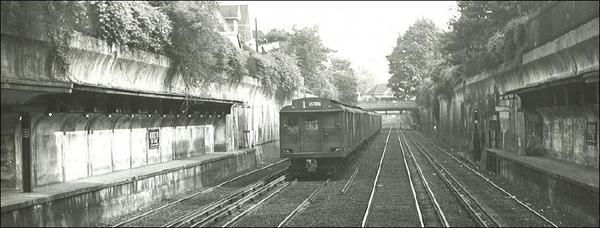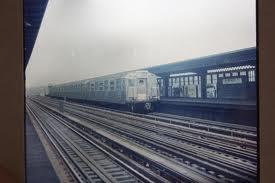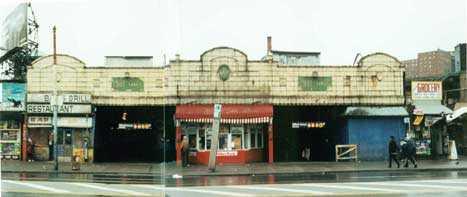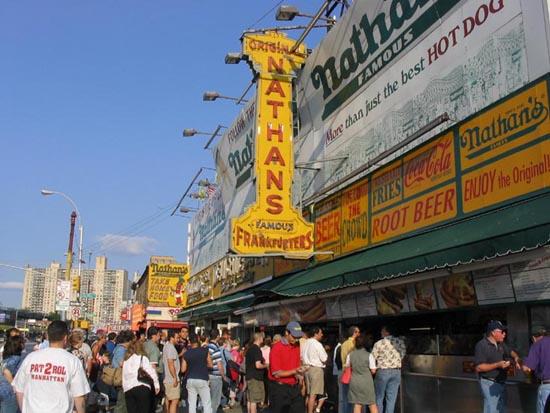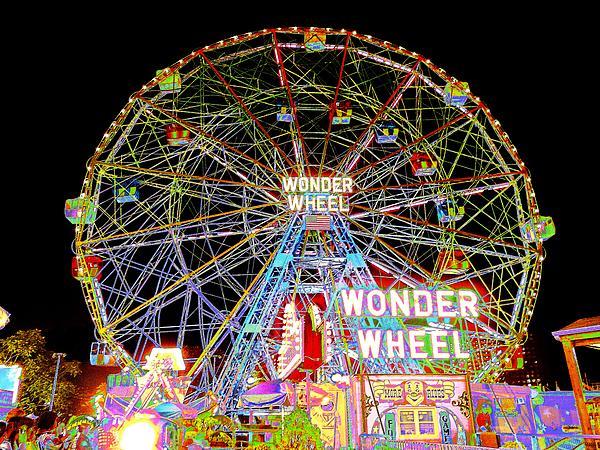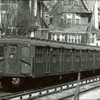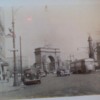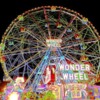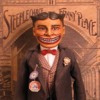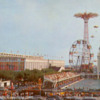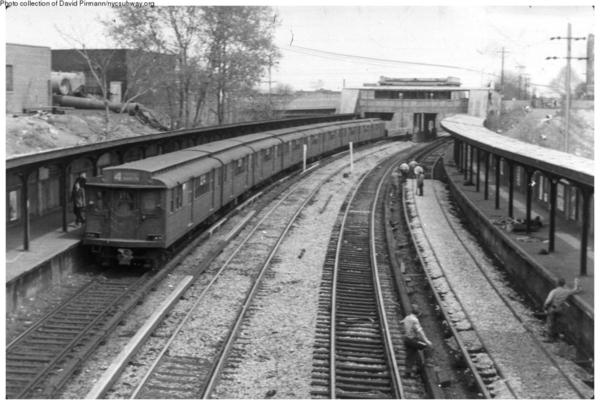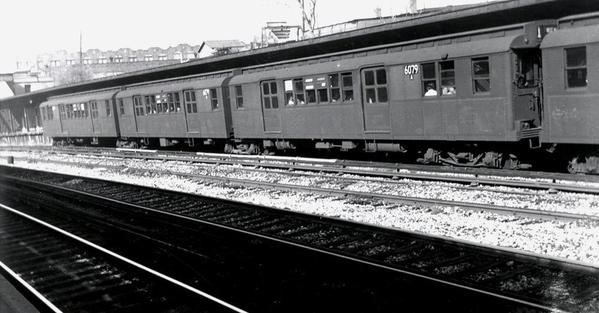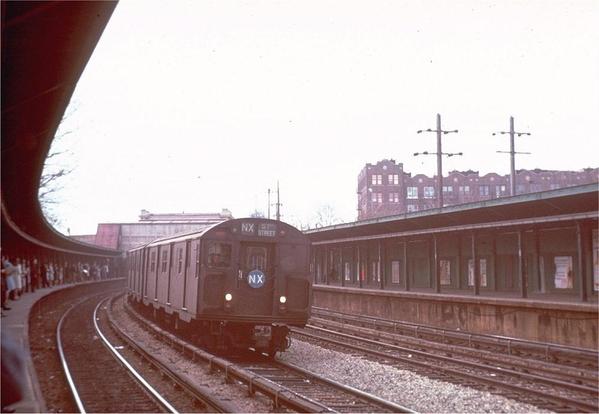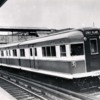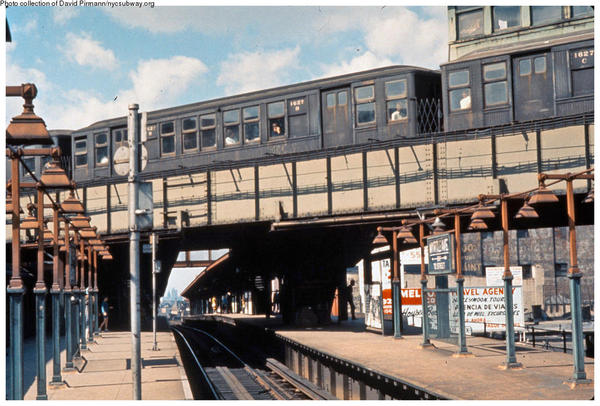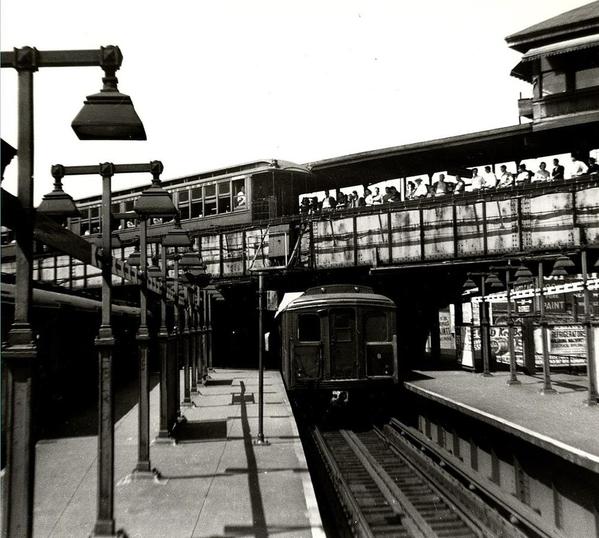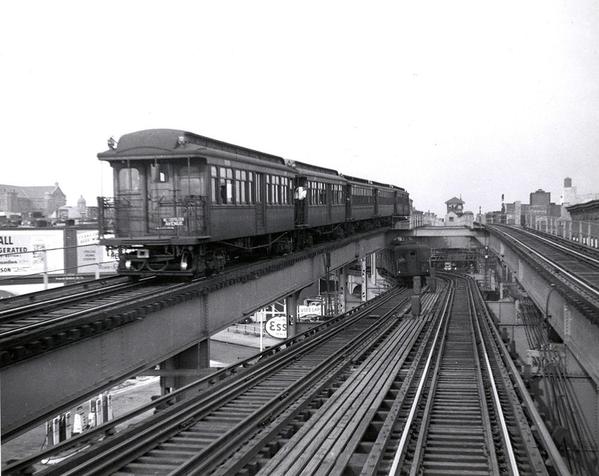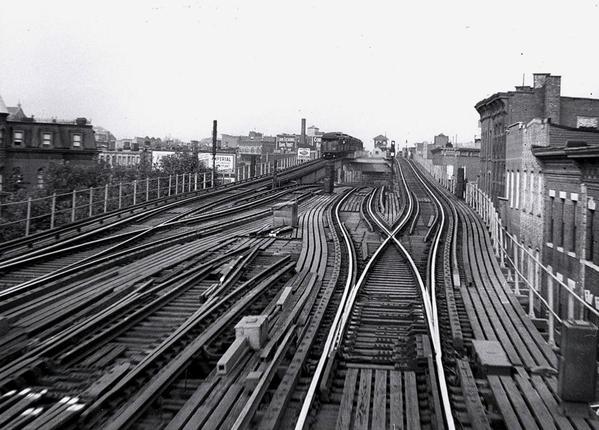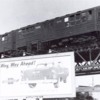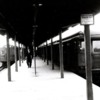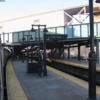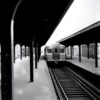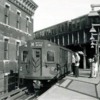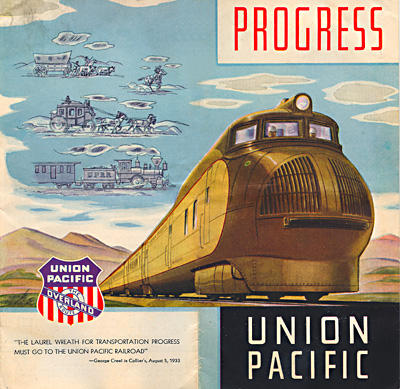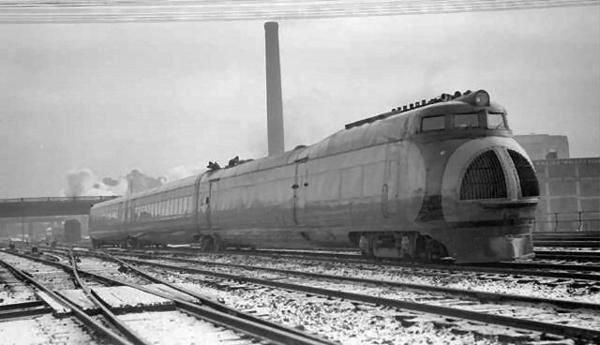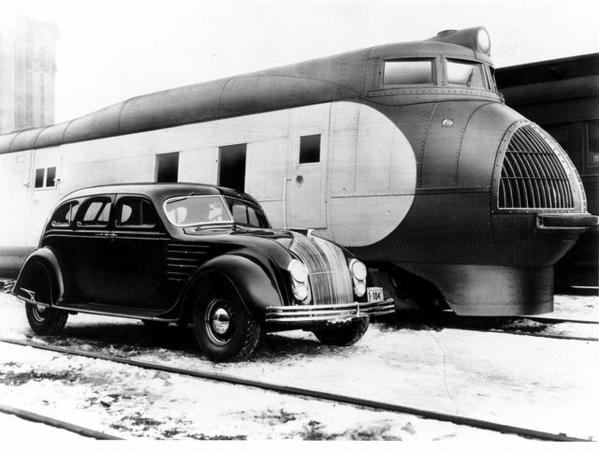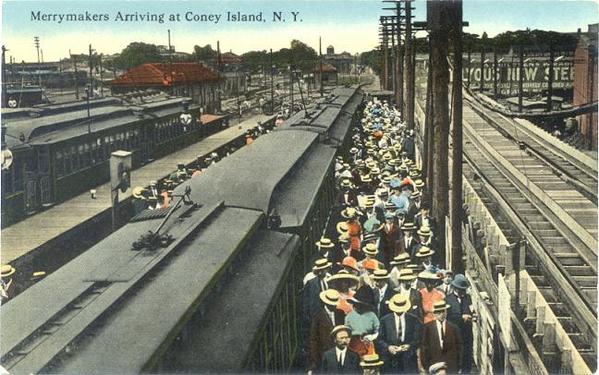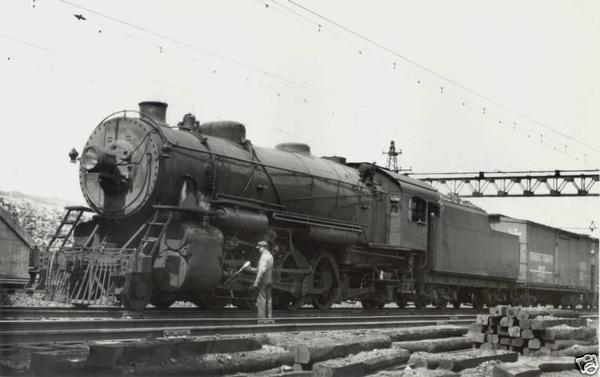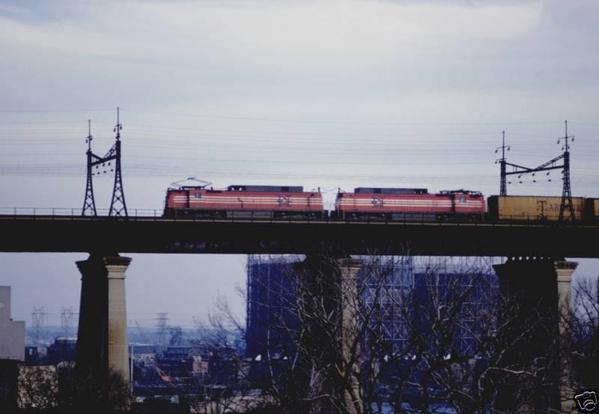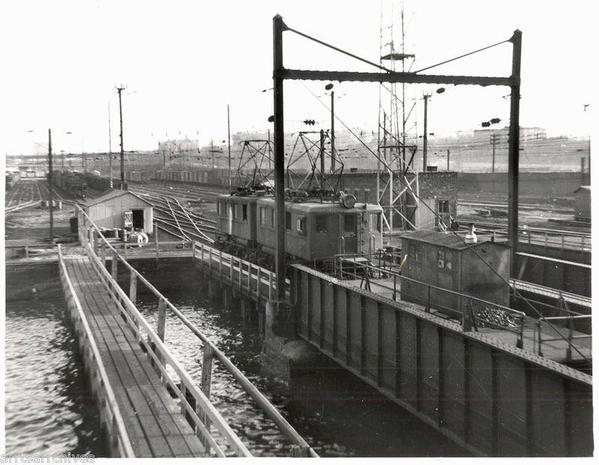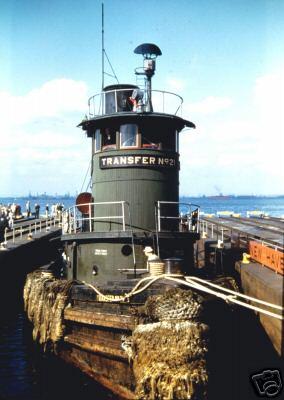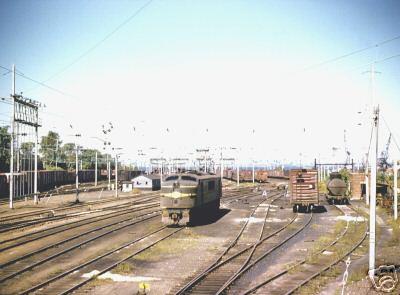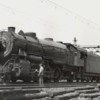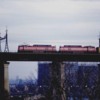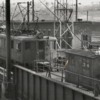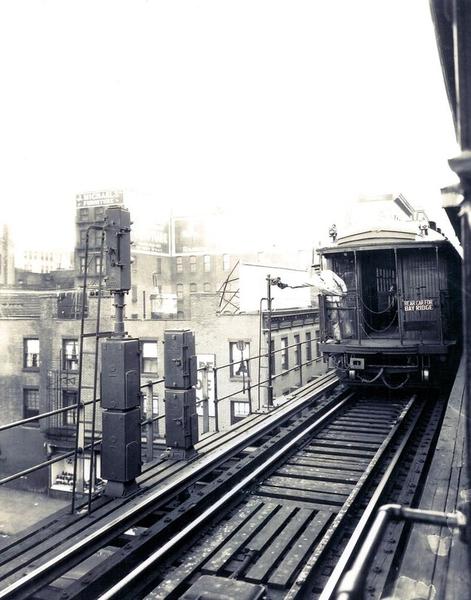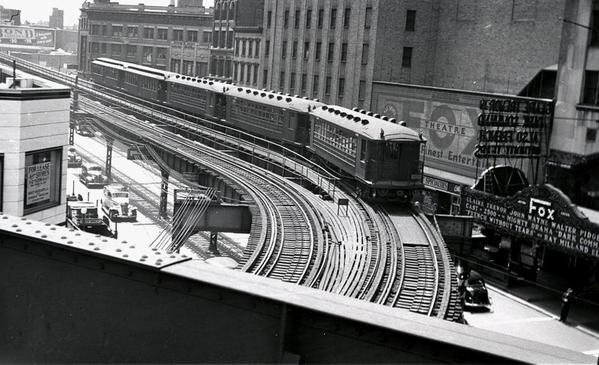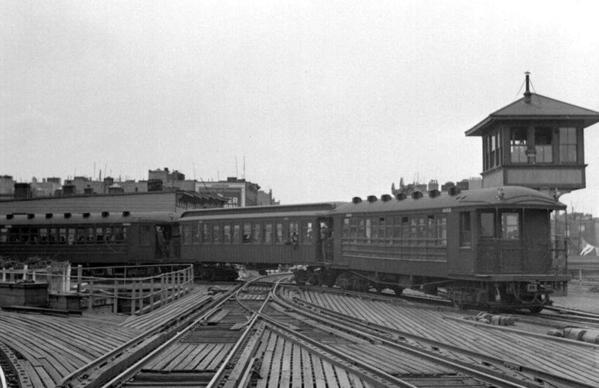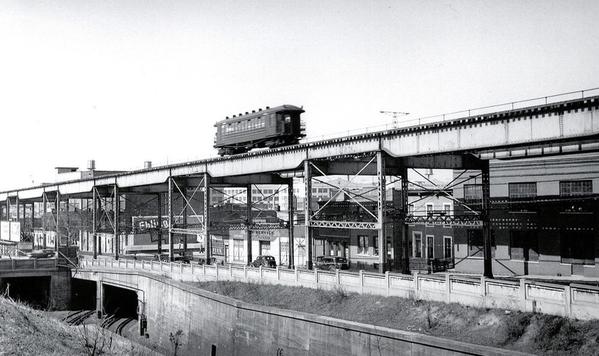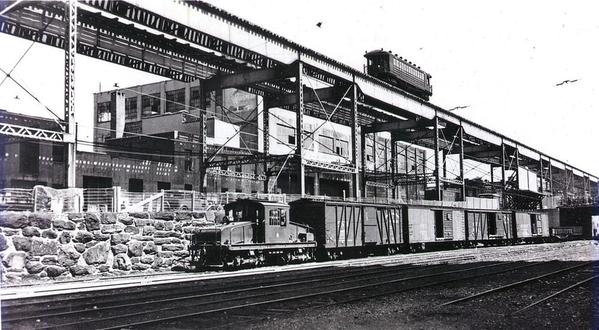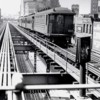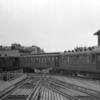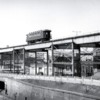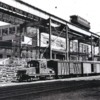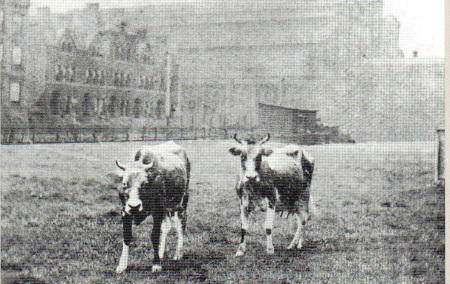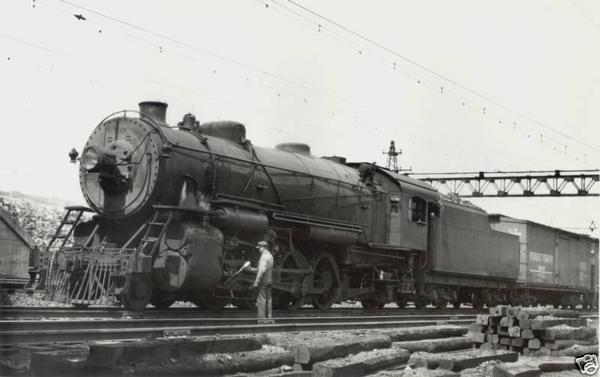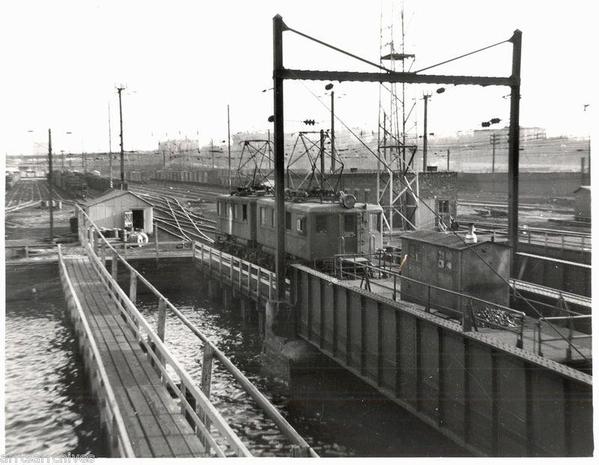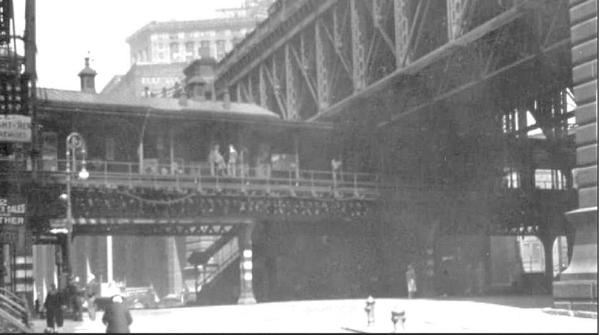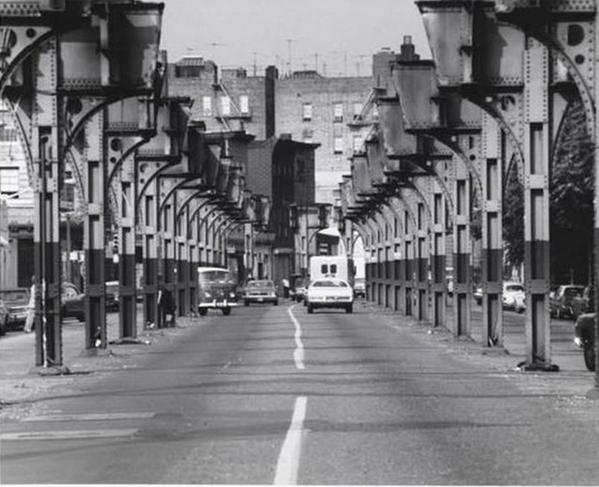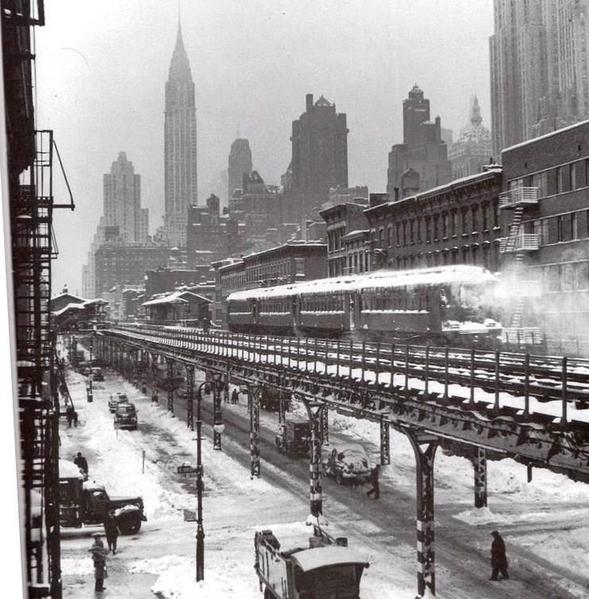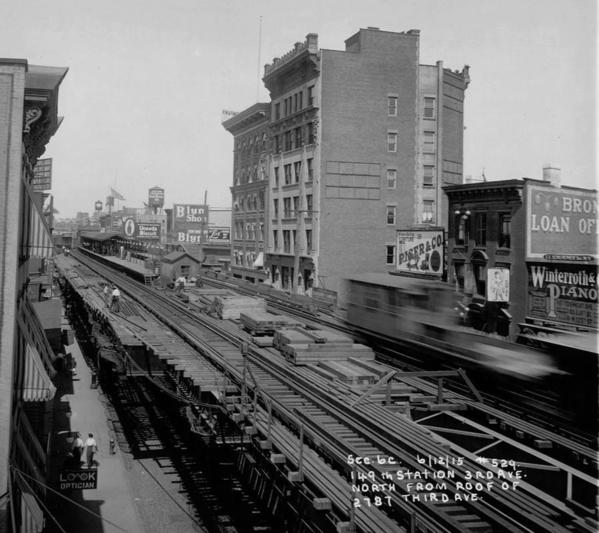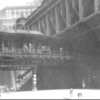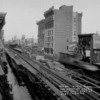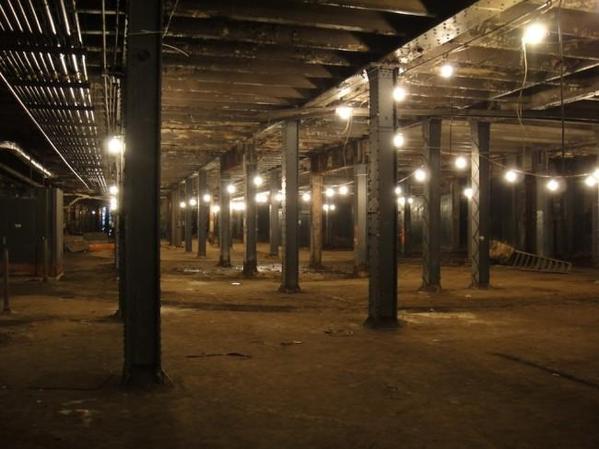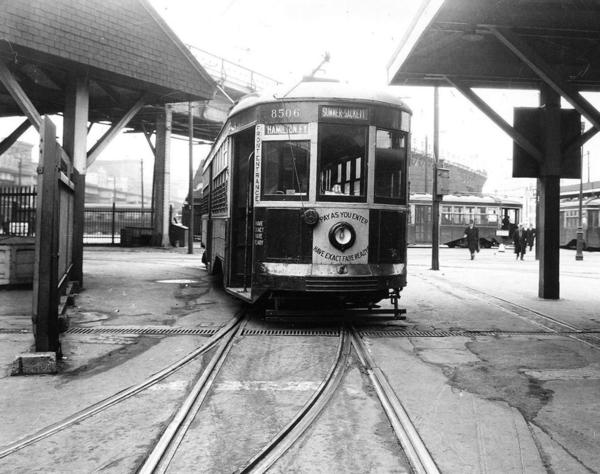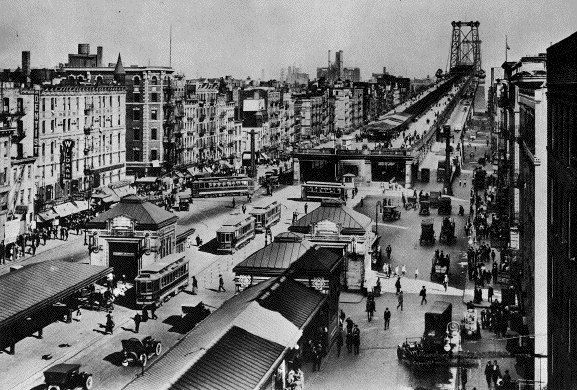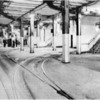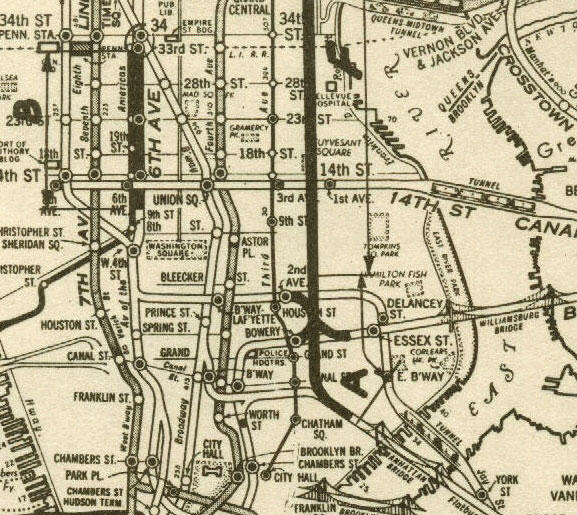In the 1950's, we went to Coney Island for a day of summer fun. The best way to get there was by the BMT . Perhaps the Sea Beach, WEst End, Brighton line or Culver. WE could get there on the McDonald ave or Coney Island Ave Streetcar lines as well.
So if you were on the SeaBeach, you probably road the Triplex cars
If you came via the Brighton Line BMT standards was your Vehicle
If you were real lucky, you might have rode in part of the trip in an R-11 set
You could ride the PCC's from Grand army Plaza or the Parade Grounds
When you arrived it was the old stillwell ave terminal
Across the street was and still is today Nathans famous
Then there were the rides. Remember the Cyclone. Its still there
There was the Wonder Wheel. Its still there
And some might remember SteepleChase Amusement park with the famous Steeplechase Horse ride, side shows and other attractions. Its gone quite a while
The Horse Ride
The park in total
Parachute Jump still there although only as a sight. Originally constructed for the 1939-40 Worlds fair, It was moved there when the fair closed. In the 1950's one trip to the top and one fall to the bottom with the shoot open was 50 cents.
Alas the day was done and it was time to go home. Hope you enjoyed your trip to Coney Island.
Attachments
Larry
We used to have our family excursions to Coney Island on the Sea Beach line from the 8th ave stop. I thought Coney Island was the center of the Universe when I was young. The Stillwell terminal was always mobbed when getting off. The ramps instead of stairs was probably because of the crowds.
Ben
Here are a few photos at 8th ave on the Sea Beach Line. The station entrance
When going to Coney Island, the standard equipment was the BMT type D Triplex from the 1920's . a Train of D Types at 8th Ave.
So lets see the Triplex from ground level
BMT Work Trains at 8 th ave . Here we have the triplex, some BMT standards and a South Brooklyn Steeplecab. Lots of variety
Heres one that you will like Ben. Even the Bluebirds showed up at 8th Ave.
In the Summertime, the BMT had an express service that ran from Fulton st/Franklin ave o the Franklin line , down the Brighton line through Coney Island and up the Sea Beach over the manhattan Bridge on the South Trackways to Chambers street. It returned over the same route and stops were limited on the Seabeach since it operated on the express tracks. In the 1950's, the train was usually BMT standards. When the letters were adopted to identify the trains, This service became the NX . Here we have an NX special coming through Coney Island with more modern equipment.
Attachments
The shot of the Bluebirds shows the 7th ave side of the station It originally had entrances on both ends 7th ave was closed in the 1970's You can see the open air bridge there

Multi's at myrtle ave.
Looks like they boys are on the way to school having used their 5cent ride pass.This train is headed towards queens . There is a train of Q Types on the upper level also heading toward Queens. Very Late 50's. The multis were running the Myrtle-Chambers service as we called it in those days. They were also used on the Canarsie line and on the Fulton Street El which remained in service from Atlantic Ave to Lefferts Blvd. That service was a rush hour service which went from Lefferts Blvd to 8th ave in Manhattan on the Canarsie line.
Heres a set of Multis on the Fulton Street El coming off Pitkin ave. Check out the billboards for the Chevy Ragtop.
We're at Lefferts Blvd. The BMT is still in charge and we have a rush hour Multi Train and the regular C Type train which ran to Rockaway Blvd on Fulton Street. The C Types where the very first BMT articulated train dating from the 1920s.
Back to Mytle Ave and Broadway. Remembering where the boys stood in the earlier photo, this is what it looks like today. Myrtle Ave El long Gone, but the structure and upper platform still there.
This location was a pretty busy place back then. BMT Standards handled a lot of the business. Here we have a shot with 4 trains in it. WE have a northbound and southbound Myrtle chambers trains turning off the Jamaica El in the foreground, an eastbound BroadwaY Brooklyn Local and its probably heading to Canarsie since it is the evening rush hour. In the distance with lights on is a R-16 set running a Jamaica Train west to Broad Street in Manhattan.
Heres the spot where the boys were . Q cars handling the duties on the Myrtle Ave El.
Same spot but about 10 years earlier than the previous photo. This time Gat5e cars holding down the service on the Myrtle Ave. El. Standards on the Jamaica line
Interesting shot of the Myrtle ave El just north of Broadway where the connection to the Broadway line meets the Myrtle ave Line. There are two types of Gate cars in the Myrtle Train and we can see a set of BMT standards on a Myrtle Chambers line just starting to come up the ramp.
Same spot as previous photo. Looks like there was an express track here on the Myrtle but the connection has been removed.
And would you know it, even the Bluebirds were seen on the Myrtle Chambers run at Myrtle Ave on the espress track. BMT standards on the Broadway Service on the local track.
Attachments
Love those Myrtle ave shots Larry
Here is St George in Staten Island circa 1946

Can you guess where this is?

This is it from the other side

Two pics that I find very interesting
This is a clearance check for the IND construction Very High Tech

This one baffles me What was this doing in New York and did it use its own power in the tunnels. My guess is that an Electric was pulling it

When the M-10000 was completed, it was the first streamlined train for the UP and perhaps the country. The UP did not operate this train in revenue service initially. IT went on a coast to coast tour in 1934 before taking up the assignment as the "City of Salina" It was the first of the streamlined lightweight UP Streamlined city trains.
The train was 204 ft long, and road on fully articulated trucks .There were three cars , a power baggage car at the front; and two passenger cars. The sleeping car "Overland Trail" was constructed for M-10000 and included in the consist in May 1934, but it was never used in regular service with that train. Subsequent streamliners were diesel powered, but a reliable engine of sufficient power was not available for the M-10000 and it was delivered instead with a spark-ignition Winton 191-A distillate engine. The front truck carried one General Electric traction motor per axle, and was the only one powered. It was constructed of " Duralumin" a light weight aluminum alloy material which could be used for both structural material and sheeting. It was widely used in the aviation industry, most notably in the rigid airships of the 1930's, Graf Zeppelin ,Hindenburg ,The Los Angeles, Akron, Macon and Shenandoah.
The M-10000 was as much a publicity tool as a practical train. During 1934 it made a 13,000-mile exhibition tour across the US, visiting Washington, DC, for inspection by President Roosevelt, New York's Grand Central Terminal where most likely it Most likely it was towed in by an S or T motor .and the Chicago World's Fair. Everywhere it went it attracted crowds and press attention, hosting almost 1,000,000 visitors. M-10000 succeeded in its aim of helping reinvent and modernise the passenger train in the popular imagination of Depression-era America. Lionel imortalized it by their rendition as a O72 Streamliner in the 1930's Many other Streamliners inspired by the M-10000 were rapidly developed, and within 15 years most major American railroads had a "streamlined" train of some type.
Here is how the Union Pacific Promoted it
Underway on the road.
And posing with a Chrysler airflow. The dawn of the streamliner era... how modern we were.
Attachments
Ben's earlier post showed the BRT's Culver Terminal at Coney Island. originally built by the Prospect Park and Coney Island Railroad. It was the main access point in Coney Island around the turn of the century.This was before the station at Stillwell avenue . You could get there from the New York Side of the Brooklyn Bridge via the elevated trains and the Long Island Railroad went there as well.There was also a trolley terminal here which was used i believe to the end of the PCC cars service in 1956.
Here are some Coney Island Visitors arriving all decked out and ready for a day of fun at Coney Island.
Attachments
Can you guess where this is?

Perchance it is this?
http://projectchart.brooklynpubliclibrary.org/
I always like looking at these old pics, I often try to locate the area as it currently stands using Google Maps.
Jerry
In 1964 we went to the worlds fair. We rode on the Brand New R-36's and the Transit Authority did promote it. Enjoy
Attachments
Great Worlds Fair video ! Thanks for posting. I lived down the block back then and rode in my stroller to the fair.
Later when in high school I rode the R-36's. By then there was graffiti inside and out. Some of my friends would walk on top of the cars when the train was moving.
Attachments
It kind-of looks like it's hiding
---PCJ
It kind-of looks like it's hiding
---PCJ
It is hiding Its all the way in the back corner of the yard
Ok Ben. Don't be foolin us now. WE know that this is on your layout in your basement!!![]()
A Bluebird rests at East New York Yard. According to the signage, she was working the run to 8th ave on the Canarsie line. At this time, this could have been the rush hour service from Lefferts Blvd on the Fulton Street El. There are C types next to the Bluebird and C tupes were the mainstay of the Fulton Street El in the final years. Oh yes, In the backround is where Bert and Harry brewed their Piels Beer. This brewery was originally Trommers White Label, an old Brooklyn Brand, before Piels Brpothers took it over. The photo is likely from the first part of the 1950's. Maybe Ben will do a Weaver TOFC with a Piels brothers beer trailer.
Attachments
In 1964 we went to the worlds fair. We rode on the Brand New R-36's and the Transit Authority did promote it. Enjoy
that guy is having WAY too much fun on that el to be normal...
Great video Love that 15 cents will get you there
A Bluebird rests at East New York Yard. According to the signage, she was working the run to 8th ave on the Canarsie line. At this time, this could have been the rush hour service from Lefferts Blvd on the Fulton Street El. There are C types next to the Bluebird and C tupes were the mainstay of the Fulton Street El in the final years. Oh yes, In the backround is where Bert and Harry brewed their Piels Beer. This brewery was originally Trommers White Label, an old Brooklyn Brand, before Piels Brpothers took it over. The photo is likely from the first part of the 1950's. Maybe Ben will do a Weaver TOFC with a Piels brothers beer trailer.
Piels is a good idea I have been kicking around either Piels or Horn & Hardart for the next trailer Piels also had a brewery in Staten island for awhile They acquired the Rubson & Horman facility in Tompkinsville. This is the original owner

Attachments
Thanks for posting the Bay Ridge Branch Photos. This was an interesting operation over the years. It began in 1878 and was leased then owned and operated by the LIRR as the New York, Brooklyn and Manhattan Beach railroad. It ran from Bay Ridge to Fresh Pond in Queens with connections to the Atlantic Ave line in East New York and the Evergreen and Bushwick Branches just North of East New York. Passenger trains were operated until 1924, primarily to the beach areas in Brooklyn.
When the plan was conceived for HellGate, This line became an important component serving as the route for freight to be floated across the harbor from Bay Ridge to Greenville on the Jersey side. When Hellgate opened in 1917, there was no catenary and Steam handled both Freight and passenger trains from the New Haven. The Freight tracks on the Bridge were not electrified until 1927. During that 10 year period, New Haven J-2 Mikados handled the freight trains running through from Oak Point in the Bronx, across Helllgate , along the New York Connecting to Fresh Pond and the Bay Ridge branch. .The LIRR always switched the float yard using C 51 class 0-8-0s at Bay Ridge.
New Haven Steam was not turned at Bay ridge so East bounds ran tender first and for good reason. The route through Atlantic ave in East New York and past the Evergreen cemetery was in a tunnel on a grade. There was a lot of smoke on the eastbound upgrade and running tender first put the smoke behind the crew. Long Island trains always had steam on the Bay Ridge line up until the 1950's when diesels replaced all steam. Normal LIRR power on the branch was H-6sb's and H-10s 2-8-0's. Of leased engines, PRR K-4class Pacifics and L class 2-8-2 s were seen on the branch as well.
The Branch was electrified in 1927 and was operated this way until the late 1950's. It was dieselized for a short period until the Virginians came in the 1960's . The LIRR switched Bay Ridge yard and East New York Yard with BB-3s when the route was electrified. In the 1950's, LIRR replaced the BB-3s with Alco S-1s and S-2s.Today, The New York and Atlantic operates the branch with local traffic and cars for the Cross Harbor Sucessor float operation.
Bens first photo is one of those J-2 class New haven Mikado's . It happens to be at Oak Point in the Bronx, getting ready to head on down to Bay Ridge. Time period is probably in the 1920's. Next photo we are 40 or so years later into the mid 1960's with the Virginians handling the train. Next two shots have the LIRR BB-3s working the flaoat bridges. An idler flat was used to pull and push cars on and off the floats . These were sometimes called reach cars since the loco needed to reach the cars on the floats. New Haven Tugs generally handled the across the Harbor float worked although LIRR tugs were used in peak times. New Haven Tugs were named " Transfer No __. The one in the photo looks like twenty something. Last Photo is a New haven Electric waiting on an Eastbound train to be made up for the run across the Bridge and on to Oak Point.
Thanks for posting the photos Ben.
Ok so we talked about the Bay Ridge Branch of the LIRR and a bit about its early days in the 19th century. Brooklyn in those days ad its population centers up North in what is today the Williamsburg and the downtown areas. The outer reaches of Brooklyn were largely rural. There were some communities like Bay Ridge and Bensonhurst, which were like surburban towns . What developed early was the Coney Island, Brighton Beach and Manhattan Beach areas. These areas developed as Resorts and amusement areas with Hotels such as the Sea Beach, Brighton Beach hotel and the Culver Hotel. There were also race tracks in the area as this was a popular pastime for New Yorkers.
In the 1870s, Steam railroads were built to serve these hotels , often financed by the Hotel owners themselves as a way to get patrons and guests to the Beach resorts. These steam railroads ran to ferry terminals at 65th street and 39th street and also reached areas around prospect park to connect with other transport back to New York City proper. In the 18880s . El construction became popular and Several El Lines were built to connect with the Steam Railroads. Eventually, the Els and Steam Railroads were unified and became the BRT around the turn of the century.
One of these early El Lines was the 5th Ave. El which came from the area around the Brooklyn Bridge , ran on Flatbush ave and turned South to reach the 36th-39 th street area were the El connected with a Steam Railroads that became what we called the West End Line and the Culver Line of the BMT. The 5th ave el was extended further South to Bay Ridge Aat 65th street where it connected with what became the Sea Beach Line of the BMT and the Bay Ridge Branch of the LIRR.
The 5th Ave El lasted until 1940 . Over the years , the 5th ave el would allow direct train service over the West End and Culver lines, making a one seat ride from downtown Manhattan to Coney Island Possible. When the 4th Ave subway was completed into brooklyn , the Sea Beach and West End were reconnected to the new Subway replacing the 5th ave connection. The 4th ave subway was extended down to 95th street in Bay Ridge which reduced the service requirement for the spur south of 36th street. In the 1930s, The BMT built the Nassau Street Loop which allowed Culver service to reach manhattan via the Montague street tunnel. The El was soon closed thereafter. Near the end, Culver trains would operate on the 5th ave El with the last car being the Bay Ridge shuttle. It was cut off at 36th street and proceede dto Bay Ridge as a separate second train.
Heres a Culver train coming down the 5th Ave el. The signage on the train advises Passengers to board the last car of the train for service to BaY Ridge. At 36th street, the last car was cut off the train and then operated as a single car train over to third Ave and down to Bay Ridge.
The El train on the 5th ave line has just turned onto Flatbush Ave at Fulton Street .This photo is taken from a train on the Fulton Street El which crossed over the 5th ave line at this point. The Fox Theatre is behind the El here. A John Wayne film and a Ray Milland Film are playing at the Fox. The El was gone in 1940. The Fox theatre lasted some 30 years longer. In later years, it was the venue for Rock An Roll Shows hosted by Alan Freed, Murray the K and Cousin Brucie Morrow.
The 5th Ave Line traveled along Flatbush Ave , past Atlantic Ave and the terminal for the LIRR Brooklyn branch over to 5th Ave where it turned South. Heres a train heading up the line towards Fulton Street. It has 5 cars so it might be a Culver train with the Bay Ridge car on the end.
At 36th street, The El had a ramp into the 36th street yard and over to the tracks of the West End and South Brooklyn Railway coming down a ramp and arriving at the 9th Ave. Station. This station was two levels with 6 tracks . The West End Service is on the upper level and still used today. The lower level is below grade and was used by the Culver trains until the Culver shuttle was ended and torn down. Platforms and tracks are still there and the South Brooklyn operates through it now.
Here is a Culver train turning off the 5th ave at 36th street. The %th Ave car has been cut off at the station and will shortly proceed as a single car train to Bay Ridge.
The single car 5th ave train is heading South to Bay Ridge. It is approaching 4th Ave. Below you can see the tracks and connection with the 4th Ave subway for the West End and the South Brooklyn Railway continuation.
Past 4th Ave and on the way to third Ave, our single car train travels . Down Below, we have some vintage railroading going on with a South Brooklyn Train and a cut of local freight heading over to the car float at 39th street or perhaps interchanging with Bush Terminal.
I hope you enjoyed your historic ride on the 5th ave El , once part of Brooklyn's extensive El System.
Attachments
Here is a view of South Ferry from the water side . The full el terminal is still in place with all routes operating so this photo predates 1940. A lot of water action is present with several boats in the slips.
Attachments
Great photos, everyone. The pics from this link aren't as old, only from the 80's. However, it sure looks worse than I remember when I was living through it!
Click on the link here: http://www.rsvlts.com/2013/10/...no-joke-47-photos/#1
Cows grazing next to Grand Central Depot NYC: http://ephemeralnewyork.wordpr...xt-to-grand-central/
Wooden viaduct over the Harlem Flats NYC before the new stone and metal viaduct was built:
http://www.columbia.edu/~brennan/beach/fig11-7.jpg
Attachments
Sorry Chipset.. No Erie here. That is a New Haven Electric either EF-3 or EP-4.
That is a New Haven EF-3. They ran over the Hellgate and down the Bay Ridge branch to the car floats. After the New Haven acquired the ex-Virginian rectifiers they ran the same route over the hellgate
Attachments
The Williamsburg Bridge originally had 6 track ways on the bridge. Two are used by the Jamaica El subway, former BMT line. Two Trackways on the North Side were used by the Metropolitan street railway, the Green line as it was known running from Washington Plaza in Brooklyn to various locations in Manhattan. The South side of the Bridge had two tracks reserved for the B&QT trolleys. It connected an underground terminal in Manhattan at Essex st and Delancy street with numerous car lines going to Brooklyn. There was also a terminal at Bridge Plaza in Brooklyn
The underground trolley terminal is the abandoned station. The bridge was opened on 13 December 1903, and bridge local streetcar service began on 10 October 1904, followed on 3 November by through service from Brooklyn trolley lines. The underground terminal was not finished in 1904 and probably opened on 18 May 1908. The Brooklyn car lines and their loop assignments of 1908 were:
 Nostrand Ave [BC], 1904-1923, 1931-1948, loop 1
Nostrand Ave [BC], 1904-1923, 1931-1948, loop 1
 Nostrand-Prospect [BC], 1906-1919, loop 1
Nostrand-Prospect [BC], 1906-1919, loop 1
 Nostrand-Culver [BC-SB], 1906-1919, loop 1
Nostrand-Culver [BC-SB], 1906-1919, loop 1
 Reid Ave [BQC&S], 1904-1923, 1931-1937, loop 2
Reid Ave [BQC&S], 1904-1923, 1931-1937, loop 2
 Hamburg Ave (Wilson Ave) [NE], 1904-1923, loop 3
Hamburg Ave (Wilson Ave) [NE], 1904-1923, loop 3
 Ralph Ave [BQC&S], 1905-1908, loop 4
Ralph Ave [BQC&S], 1905-1908, loop 4
 Ralph-Rockaway [BQC&S], 1908-1923, 1931-1948, loop 4
Ralph-Rockaway [BQC&S], 1908-1923, 1931-1948, loop 4
 Bushwick Ave [BC], 1904-1921, loop 5
Bushwick Ave [BC], 1904-1921, loop 5
 Tompkins Ave [BC], 1906-1923, 1931-1947, loop 6
Tompkins Ave [BC], 1906-1923, 1931-1947, loop 6
 Bridge Local, 1904-1948, loop 7
Bridge Local, 1904-1948, loop 7
 Grand St [BC], 1904-1923, loop 8
Grand St [BC], 1904-1923, loop 8
 Franklin Ave [CI&B], 1904-1923, loop 8
Franklin Ave [CI&B], 1904-1923, loop 8
 Broadway [BQC&S], 1904-1923, loop unknown
Broadway [BQC&S], 1904-1923, loop unknown
 Sumner Ave [BQC&S], 1905-1923, loop unknown
Sumner Ave [BQC&S], 1905-1923, loop unknown
The trolley operation lasted until 1948 . The tracks on the South side were replaced by a roadway and the underground terminal then cutoff from rail access. there is some discussion about creating an underground park at this site.
Here is a photo of the terminal as it was when in service
The terminal pretty much as it is today
A Brooklyn bound car on the Bridge in the 1940s. Still in the B&QT colors
This car is at Bridge Plaza on the Brooklyn side. The photo dates to the mid 1030s. The cars paint was a bit more elaborate.
Finally, a shot back on the Manhattan side when the Bridge was relatively new. Not many automobiles but plenty of trolleys. The large square structures were the entrances to the BRT /BMT/LIRR station at Essex on the left and the Trolley terminal on the right
Attachments
Larry I walked through the trolley terminal the other day at the foot of the Williamsburg bridge Many tracks are still intact They want to make it a super market I heard
Ben that is nice duty you have at the MTA. Looking forward to a tour by you one of these days. Did you get a photo of the present day terminal with your I phone?
I can believe all of you guys forgot City Hall Station...



The City Hall Station was the original southern terminus of the first "Manhattan Main Line" built by the Interborough Rapid Transit (IRT) Company. The line, opened in 1904, was intended to be a showpiece and crown jewel of the new subway system. Unlike the rest of the line, City Hall featured tall tile arches, brass fixtures, and skylights that ran along the entire curve of the station — a sort of miniature Grand Central Station. In fact, befitting the elegance of the station, it was even the chosen place for hanging the commemorative plaques recognizing the achievement of building the underground train system
Hi Madison
Thanks for posting. We were waiting for your post and to join this old new york celebration. Thanks for the great info on this station.
The #6 trains currently use this loop to turn around southbound trains to head North to uptown manhattan and the Bronx. I believe that the train personnel no longer chase you off the Southbound at Brooklyn Bridge so it may be possible to ride the loop and get a glimpse of this treasure today.
Hi Madison
Thanks for posting. We were waiting for your post and to join this old new york celebration. Thanks for the great info on this station.
The #6 trains currently use this loop to turn around southbound trains to head North to uptown manhattan and the Bronx. I believe that the train personnel no longer chase you off the Southbound at Brooklyn Bridge so it may be possible to ride the loop and get a glimpse of this treasure today.
So I came across this route map and it has a very interesting addition to it. Yes it is the route of the 2nd ave subway as it was envisioned back in 1951. The map shows the second ave line tied into the BMT Routes , the Broadway Brooklyn line in both directions,the Broadway NY -4th ave Brooklyn line southbound and a connection to the uptown IND at 2nd ave on the 6th Ave IND line. There are no stations noted on the 2nd ave route. It appears that service North south on this line was planned to/from Broad Street on the Nassau Loop and North south to Brooklyn on both the Jamaica line over the Williamsburg Bridge and the Southern Division over the Manhattan bridge . Also looks like North South service from the Brooklyn lines were envisioned onto the existing IND lines via the 2nd ave connection.
The R-11 prototype train was built for these operations and as we know worked on the BMT for a large part of its existence. Interesting that the connections shown with BMT manhattan Bridge Line, The BMT Williamsburg Brooklyn Bridge lines and the IND 6th ave line all came to pass despite the fact that the 2nd avenue line was not built. I addition, this link has become important in the unification of the BMT and IND with services operating to and from manhattan today somewhat the same as they thought in 1951.
Oh one more thing. Check out the third ave route. You will note on the nap that the south Ferry Branch is gone but the city hall to chataham square section is still in service.




